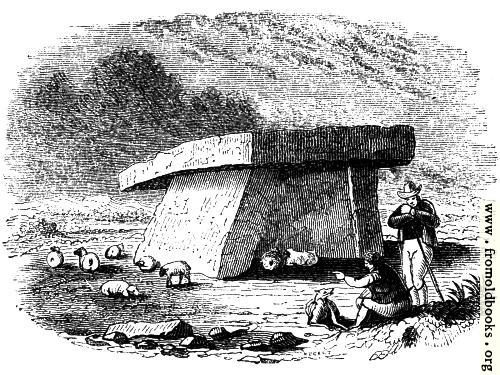Annotation:Cottey House: Difference between revisions
(Created page with "{{TuneAnnotation |f_tune_annotation_title=https://tunearch.org/wiki/Annotation:Cottey_House > |f_annotation='''COTTEY HOUSE'''. English, Country Dance Tune (6/8 time). D Major...") |
No edit summary |
||
| (7 intermediate revisions by the same user not shown) | |||
| Line 1: | Line 1: | ||
{{TuneAnnotation | {{TuneAnnotation | ||
|f_annotation='''COTTEY HOUSE'''. English, Country Dance Tune (6/8 time). D Major. Standard tuning (fiddle). AABB. "Cottey House" was first published in the supplement to the 11th edition of the '''Dancing Master''' (London, 1701), and appeared in all subsequent editions of the long running series until the 18th and final edition of 1728 (printed by John Young). It also appears in Walsh's '''Compleat Country Dancing Master''', printed in London in 1718 (with editions in 1731 and 1754). | |||
[[File:Kitscoty2.jpg|thumb|500px|left|Kit's Coty House, Kent. 1845.]]The title was researched by Graham Christian <ref>Graham Christian, "Tell Me More--Cottey House", '''CDSS News''', Winter 2017-2017, p. 18. </ref>, who found it to refer to Kit's Coty House, the name of ancient monument near the village of Addington, Kent, consisting of three standing stones topped with a table-like fourth stone. According to local lore it was supposed to have been the funeral monument of Catigern, the son of an early English King who was killed fighting the Saxons. It was thought that over the years "Catigern's House", built with ''coits'' or large stones (i.e. "Catigern's Coit House") devolved into "Cottey House" in local usage. While there have been many theories about the structure, including a place for Druidic human sacrifices, the consensus of modern scholarly opinion is that in was a tomb. | |||
|f_printed_sources=Barlow ('''The Complete Country Dances from Playford's Dancing Master'''), 1985; No. 491, p. 109. Barnes ('''English Country Dance Tunes'''), 1986. Raven ('''English Country Dance Tunes'''), 1984; p. 19. Elias Howe ('''Musician’s Omnibus Nos. 6 & 7'''), Boston, 1880-1882; p. 611. | |||
|f_see_also_listing=Read Graham Christian's "Tell Me More--Cottey House" at CDSS [https://www.cdss.org/images/newsletter_archives/columns/CDSS_News_Winter_17-18_Tell_Me_More_Cottey_House.pdf ] | |||
|f_tune_annotation_title=https://tunearch.org/wiki/Annotation:Cottey_House > | |f_tune_annotation_title=https://tunearch.org/wiki/Annotation:Cottey_House > | ||
}} | }} | ||
------------- | ------------- | ||
Latest revision as of 22:58, 29 June 2020
X:1 T:Cottey House M:6/8 L:1/8 K:D A|d3 f2g|afb gea|fdg ecf|dBe c2A|d3 f2g| afb geg|aBc dB2|(A3 A2)::A|d2d B2B|ede c2c| fef ^ABc|c2B B2f|bab g2e|aga f2f|gfg cBc| aga dcd|bed cAG|F A2 GB2|A d2 Be2|Adc d2:||
COTTEY HOUSE. English, Country Dance Tune (6/8 time). D Major. Standard tuning (fiddle). AABB. "Cottey House" was first published in the supplement to the 11th edition of the Dancing Master (London, 1701), and appeared in all subsequent editions of the long running series until the 18th and final edition of 1728 (printed by John Young). It also appears in Walsh's Compleat Country Dancing Master, printed in London in 1718 (with editions in 1731 and 1754).

- ↑ Graham Christian, "Tell Me More--Cottey House", CDSS News, Winter 2017-2017, p. 18.

